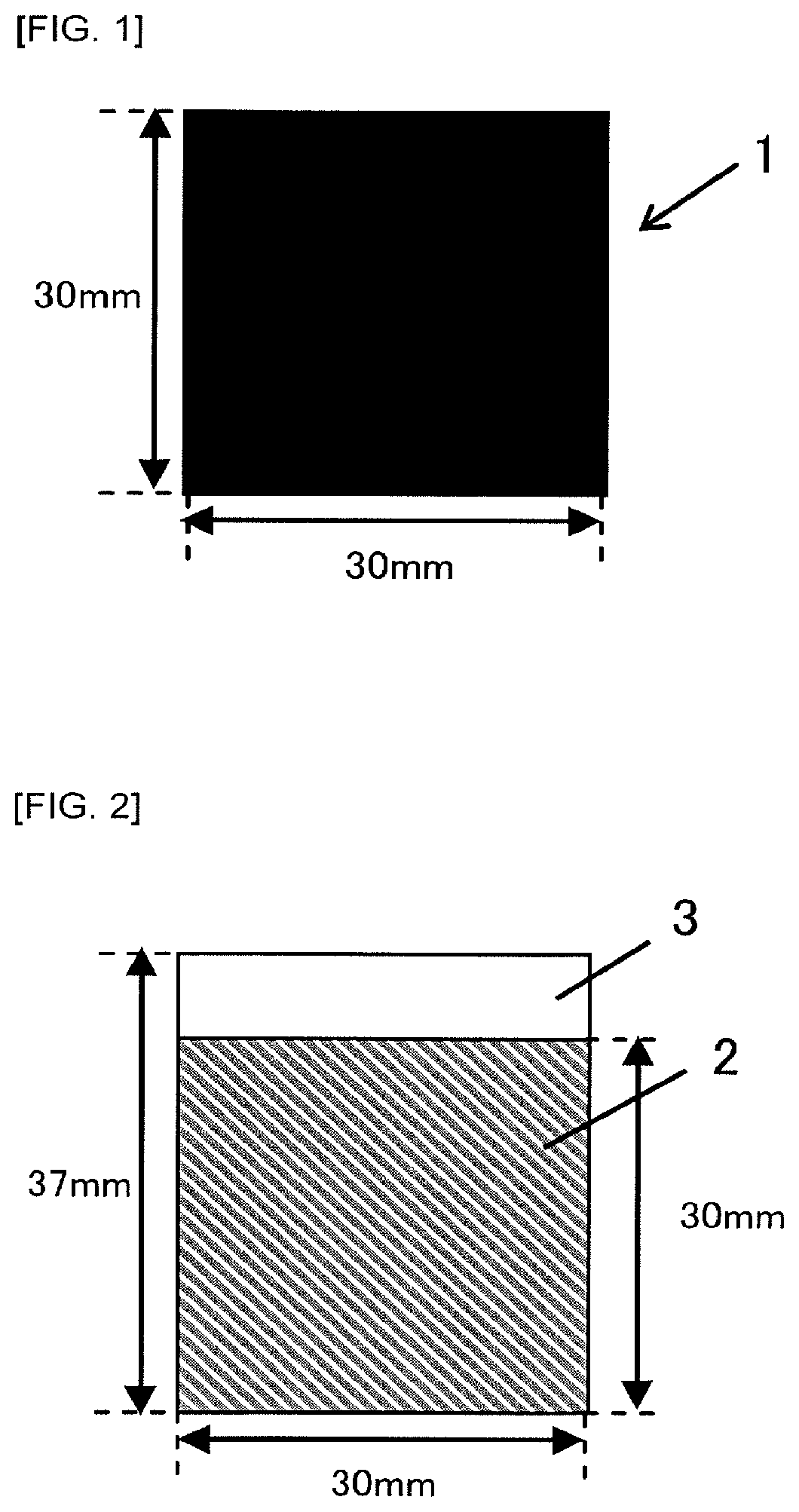Carbonaceous material for electric double layer capacitors and method for producing same
a technology of carbonaceous material and double-layer capacitor, which is applied in the direction of carbon compounds, inorganic chemistry, protecting/adjusting hybrid/edl capacitors, etc., can solve the problems of insufficient capacitance per volume, reduction of internal resistance and the like, and improvement of durability, etc., to achieve the effect of reducing resistance, reducing capacity per volume, and suppressing resistan
- Summary
- Abstract
- Description
- Claims
- Application Information
AI Technical Summary
Benefits of technology
Problems solved by technology
Method used
Image
Examples
example 1
[0106]A char produced from a coconut shell made in Philippines (specific surface area: 370 m2 / g) was subjected to primary activation with a combination of a propane combustion gas and water vapor (water vapor partial pressure: 35%) at 850° C. until the below-described specific surface area was attained, whereby a primary-activated granular carbon having a specific surface area of 1,660 m2 / g, an elemental potassium content of 10,546 ppm and an elemental iron content of 320 ppm was obtained.
[0107]Subsequently, the thus obtained primary-activated granular carbon was washed with hydrochloric acid (concentration: 0.5 N, diluent: ion exchanged water) at a temperature of 70° C. for 30 minutes and then thoroughly washed with ion exchanged water for removal of residual acid, after which the resultant was dried to obtain a primary-washed granular activated carbon having an elemental potassium content of 81 ppm and an elemental iron content of 19 ppm. This granular activated carbon was further...
example 2
[0109]A primary-activated granular carbon was obtained in the same manner as in Example 1. Subsequently, the thus obtained primary-activated granular carbon was washed with hydrochloric acid (concentration: 0.7 N, diluent: ion exchanged water) at a temperature of 70° C. for 30 minutes and then thoroughly washed with ion exchanged water, after which the resultant was dried to obtain a primary-washed granular activated carbon having an elemental potassium content of 31 ppm and an elemental iron content of 11 ppm. This granular activated carbon was further subjected to secondary activation with a propane combustion gas (water vapor partial pressure: 15%) at 910° C. until the below-described specific surface area was attained, whereby a secondary-activated granular carbon having a specific surface area of 2,289 m2 / g, an average pore size of 2.31 nm, an elemental potassium content of 49 ppm and an elemental iron content of 18 ppm was obtained. The thus obtained secondary-activated granul...
example 3
[0111]A primary-activated granular carbon was obtained in the same manner as in Example 1. Subsequently, the thus obtained primary-activated granular carbon was washed with hydrochloric acid (concentration: 0.3 N, diluent: ion exchanged water) at a temperature of 70° C. for 30 minutes and then thoroughly washed with ion exchanged water, after which the resultant was dried to obtain a primary-washed granular activated carbon having an elemental potassium content of 105 ppm and an elemental iron content of 90 ppm. This granular activated carbon was further subjected to secondary activation with a propane combustion gas (water vapor partial pressure: 25%) at 930° C. until the below-described specific surface area was attained, whereby a secondary-activated granular carbon having a specific surface area of 2,202 m2 / g, an average pore size of 2.46 nm, an elemental potassium content of 151 ppm and an elemental iron content of 136 ppm was obtained. The thus obtained secondary-activated gra...
PUM
| Property | Measurement | Unit |
|---|---|---|
| pore size | aaaaa | aaaaa |
| pore size | aaaaa | aaaaa |
| pore size | aaaaa | aaaaa |
Abstract
Description
Claims
Application Information
 Login to View More
Login to View More - R&D
- Intellectual Property
- Life Sciences
- Materials
- Tech Scout
- Unparalleled Data Quality
- Higher Quality Content
- 60% Fewer Hallucinations
Browse by: Latest US Patents, China's latest patents, Technical Efficacy Thesaurus, Application Domain, Technology Topic, Popular Technical Reports.
© 2025 PatSnap. All rights reserved.Legal|Privacy policy|Modern Slavery Act Transparency Statement|Sitemap|About US| Contact US: help@patsnap.com



